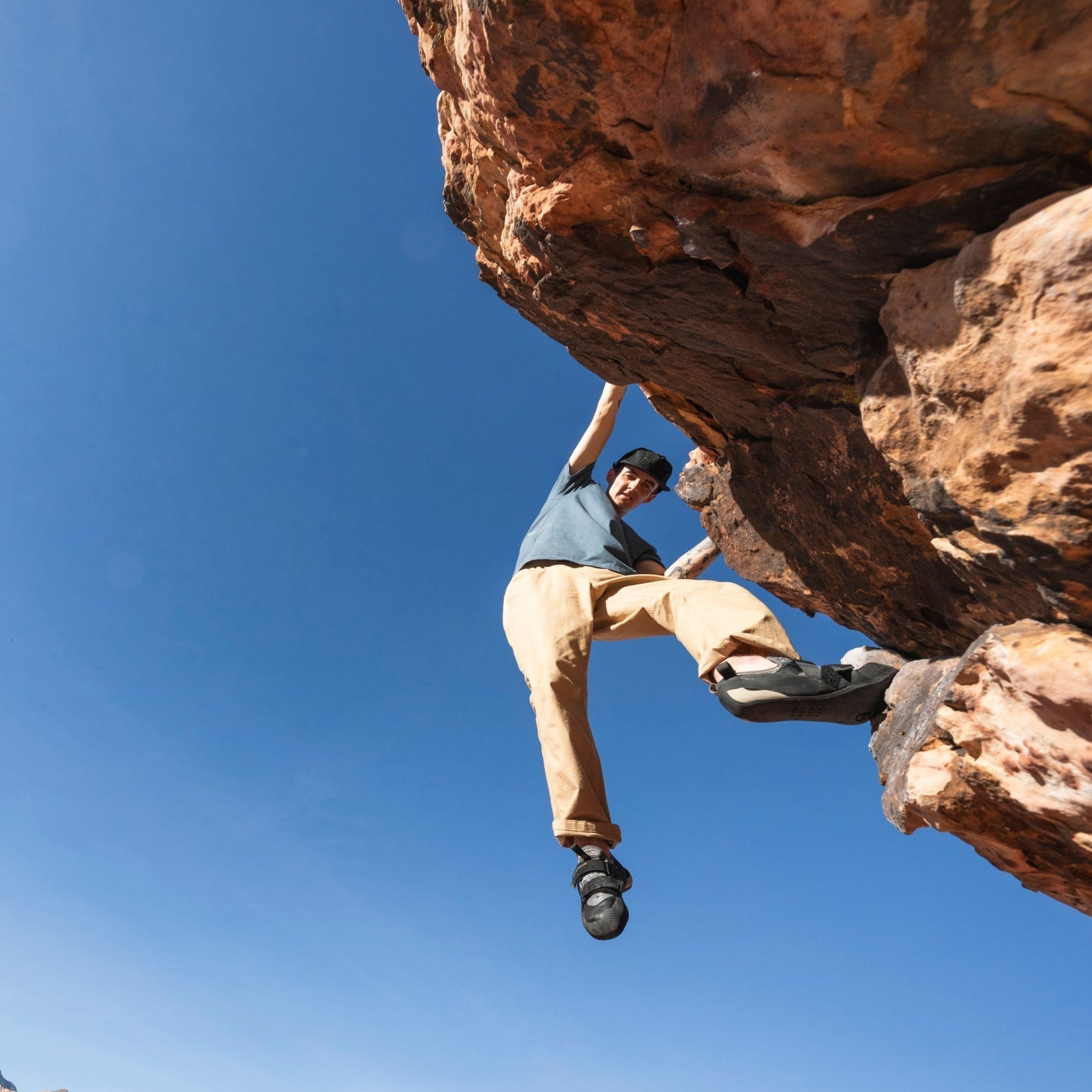
WHAT TO WEAR BACKCOUNTRY SKIING
Dial in your kit for the skin track.
Add $99.00 more to quality for free Shipping!
$0.00 USD
Wednesday, December 11, 2024
Over the past 40 weeks I’ve shared glimpses of my journey through pregnancy and my climbing life as an expectant Mum. While I’ve focused on staying active, what you don’t see are the tough decisions I’ve made around risk, as well as the quieter, less glamorous aspects of pregnancy—like hours spent in front of the TV. As pregnant climbers, we face difficult decisions around risk, level of activity and how to set ourselves up for postpartum recovery. Those challenges are compounded by a lack of understanding from health professionals, judgement for participating in an unconventional sport and advice geared toward less active lifestyles. I’ve had a huge number of climbers, and their partners reach out to me with questions, so I’m writing this article to share my experiences and what I’ve learned along the way.

You might be reading this with certain preconceptions about climbing while pregnant. Maybe you’re already familiar with the idea and have seen other women do it, or perhaps you’re surprised it’s even possible. Wherever you stand, I encourage you to do what feels right for you (or your pregnant friend/partner) and remain open-minded about what’s possible.
Remember, many beliefs you hold may not be entirely your own. Too often, women are told what they should do, think, and feel during pregnancy—sometimes to the detriment of their well-being. Yet also be mindful that your body is going through the most extreme change a human body can experience and you have nothing to prove, so don’t try and chase being a “badass” (whatever that means) if you’re not feeling it.
You’ll quickly realize that there are countless “rules” surrounding basic activities like eating, sleeping, drinking, medication, and exercise—let alone rock climbing. Navigating this can be challenging, and it’s unlikely that all your decisions will be free from the influence of family, friends, cultural norms, community and expectations. Also, be prepared for unsolicited advice and outdated opinions. For some reason, people feel entitled to weigh in on your choices during pregnancy, as if they have some responsibility for your unborn child—something they likely wouldn’t do if it were just you. Apparently, this trend continues into parenthood, so we all have that to look forward to!
Bringing awareness to all this, finding unbiased resources and tapping into your intuition will help you navigate this bumpy but exciting journey!
Congratulations, you’re pregnant! The first trimester will likely be a whirlwind of emotions, hormones and symptoms. If you’re anything like me, you’ll be balancing the joy, excitement, and gratitude of being pregnant with the epic changes unfolding. A cocktail of hormones is rapidly triggered to start pregnancy and build the placenta (a whole new organ which will continue to grow up until birth). You will produce more estrogen during one pregnancy than throughout your entire life when not pregnant, just to give you a sense of how different this will feel compared to your regular hormonal changes. For most, this comes with a myriad of symptoms and challenges, which I’ll discuss below. Trying to fit climbing in around all that is challenging, but I found it worth the effort.
The first trimester can be especially difficult because it’s common not to tell anyone about your pregnancy until your 12-week scan. This is usually to protect you from having to share any pregnancy losses which frequently occur in the first trimester, usually due to chromosomal reasons.
As a climber, this can be hard to navigate since not telling your partners could be a safety concern or simply a bit weird since you might modify your climbing from the start, and you won’t be able to give a reason for this. I decided to tell the people I was climbing with at the time because it felt strange to hide things from them, but this is a personal choice and whatever you decide to do, navigating it all can feel tricky, so heads up.
The first trimester often comes with a lot of what’s called “morning sickness,” although I seriously do not know anyone who says they only experienced it in the morning. I had nausea most days, all day, for about two months. It felt like being on a boat in rough seas that I couldn’t get off. My many food aversions made eating and meal prep stressful. This is a further consideration if you continue to exercise, as fueling yourself is more important than in a more sedentary lifestyle.
I found climbing eased my nausea, but I know a lot of women who couldn’t face it. I did struggle with van life, though. Not having a fridge and being unable to wash or eat in quite the same way as at home. Your sense of smell is heightened in pregnancy so be prepared to find things like stale food, armpits and cheesy climbing shoes extra gross. This is your body’s way of putting you on “high alert” for any toxins or nasties that could make you sick. I am a very odor-sensitive person anyway, so I found this symptom particularly difficult and there are still smells that I associate with that time that trigger the feeling of nausea (unfortunately, this includes the smell of our van; we’re considering selling it). When pregnancy sickness becomes more serious, it’s called Hyperemesis Gravidarum, and it can be serious for mother and baby; if you’re vomiting a lot or feel you can’t eat well, please seek medical help.
It’s also common to feel tired. This sounds trivial but pregnancy fatigue is not normal fatigue. Sometimes, this fatigue felt like a constant low-level apathy, and other times it was totally paralyzing; I would sit down and just be unable to get back up. I couldn’t read or look at my phone; I could only stare into space. It honestly felt like I’d been drugged. This is a prevalent first-trimester symptom and obviously affects climbing and life. At the time, I was climbing in France and working on our Strong Mind Flight School course, and I found that I could either climb or work during the day, I couldn’t do both. Depending on your life circumstances, expect to do a bit less climbing and rest more than normal, especially if you have a full-time job. If you’re training, be prepared to lower the volume and intensity of your sessions. If you’re a very active person, this can be a shock, and some find it demoralizing, but remember that you’re growing a human, so although it’s good to stay active, it’s also good to rest and listen to your body.
Generally, in the first trimester, I did not feel like my body was my own anymore. It felt like a parasite had taken control of my mood, likes and dislikes, energy and functioning. What powerfully (and comically) illustrates this is that I was repulsed by both chocolate and tea during this time, which, if you know me at all, you will know are two of my favorite things.
Despite the fatigue and sickness during the first trimester, this is the time you’ll be able to climb more “as normal” as you won’t have a bump to contend with. I could climb close to my normal level with moderation in volume. That said, many women don’t have this experience. Your body isn’t just hormonal; it’s subject to some pretty intense physiological changes; by week 8, your cardiac output has already increased by 20%, every organ system in the body will be affected, your body requires more oxygen, and even your brain starts to change. This will likely affect your performance and how it does that will be unique to you.

For me, like many, the second trimester was the most enjoyable phase of pregnancy. The nausea and fatigue subsided, and I felt more like myself. I also started to feel proud of my growing body and in awe of how it was changing. However, this is also when the physical changes in my body began to really impact my climbing. At one point, I gained roughly a kilogram weekly for eight weeks straight. Coupled with a growing bump and changes in my core, this led to a noticeable drop in my climbing performance weekly. While I expected the decrease in performance, it did make choosing crags more challenging since I couldn’t predict how hard I’d be able to climb on any given day.
One of the most frustrating misconceptions about pregnancy is the idea that it’s simply about carrying the extra weight of the baby when actually the baby’s weight is just a small part of the picture. Aside from all the hormonal and structural changes like separated abdominals (which is called diastasis, and no, you can’t avoid this), your body must also create a whole new organ (the placenta) and amniotic fluid, increase blood volume, enlarge breast tissue, move your vital organs around to make room, expand the uterus, and build extra fat stores. By the end of pregnancy, your blood volume alone may have doubled (that could be an extra 4kg/9lbs on its own!).
For climbers, especially those with lower fat stores, the weight gain needed to stay healthy during pregnancy can be even more pronounced compared to non-athletic women. I know several top-level climbers who gained over 20kg/44lbs during their pregnancies, so don’t freak out if you experience this.
Watching your body change so dramatically can be challenging. Many climbers are attached to their physical appearance and understandably tie their identity as climbers to looking a certain way. Pregnancy can be a powerful time to confront this mindset. Instead of focusing on what your body “ought” to look like, try to appreciate it for what it can do—like growing a baby and climbing walls! It’s pretty epic that we can build humans inside us! Focusing on that is empowering and can help you embrace the changes with a more positive outlook.
The second trimester is a good time to start working on pregnancy-specific exercises and adapt your training to accommodate changes in your pelvis and abdominal area. Diastasis recti refers to the separation of the left and right sides of the rectus abdominal muscle (your 6-pack) and the stretching of the tissue connecting those muscles called the Linea alba. Although diastasis is unavoidable in pregnancy you can avoid chronic abdominal doming and learn how to manage intra-abdominal pressure. This will prepare you well for postpartum recovery and help prevent excess separation.
Pregnancy and postpartum trainer Joy Black helped me with this aspect of my pregnancy. I learnt how to avoid doming by switching on my deep core. We also focused on essential areas like pelvic floor strength, pelvis stability, glute strength, and maintaining some climbing-specific strength, including biceps, triceps, and finger strength.
The training helped me feel robust, mobile and confident in my body throughout my pregnancy. I felt especially happy with how much pelvic stability I maintained throughout pregnancy.
I recognize that many women get unlucky and experience discomfort and pain during pregnancy, particularly in the pelvis, back, and abdominal area, no matter what they do. If this happens to you, reaching out to an expert is even more important; it’s worth giving yourself the best chance to be as resilient and pain-free as possible.
If you’re considering a similar approach, hire a coach like Joy, see a pregnancy PT or do your own research.

A return of fatigue and other symptoms.
Unfortunately, the third trimester often brings back some of the difficult symptoms from earlier in pregnancy coupled with more extreme body changes. Your core will become more compromised, and you’ll be in a heavier, more cumbersome body. This can make everyday tasks more challenging—things like getting out of bed, bending down, putting on shoes, or enduring long car rides can become a real hassle. Surprisingly, climbing was more comfortable for me than doing many of these routine activities. So, don’t let those difficulties dictate what you think you can or can’t do when it comes to climbing or other activities.
That said, many experience a return of the fatigue they felt in the first trimester. At 38 weeks, I was doing two short strength sessions per week, a fun climbing session (usually 4-5 autobelay routes), prenatal yoga, and lots of walking. Many women I know, especially those with busier lives, understandably step away from climbing as they approach the end of pregnancy. At 40 weeks I preferred swimming, walking and yoga to climbing.
I think the length of pregnancy, discomfort toward the end, and the impending due date can make the later stages of the third trimester a tough time mentally and emotionally. For me, the difference between the start of the third trimester and the end was night and day in terms of how content I was to be pregnant. Towards the end, there is a sense of wanting it to be over, not wanting to share your body with another human, wanting to meet your baby. You might also be thinking a lot about birth and if it’s your first child, preparing to be a parent. Climbing could be a healthy distraction from all this, or it could be an unhelpful addition, and either way, it’s a challenging time.
Based on everything I’ve researched and read, it’s important to keep moving even in the last stages of pregnancy. Good options are prenatal yoga, walking, swimming, or climbing if it feels good. The physical demands of childbirth and the recovery period afterward are no joke, so keeping your body active, even at a significantly reduced level, can help you prepare for what’s ahead and stay healthy in body and mind. Just listen to your body and don’t force anything.
Before diving into the specifics of risk in pregnancy, let’s address the concept of risk in general. Many people, even climbers, haven’t deeply considered what risk truly means or their relationship with it. Here are a few key points to reflect on:
Risk is personal, complex, and far from binary. Your risk tolerance will differ from others, and your ability to manage and moderate risk in climbing depends on many factors, primarily your own experience and that of your partners. Risk is rarely a simple matter of “safe” or “unsafe”; it’s probabilistic. So, be cautious about accepting rigid rules or binary distinctions imposed by others. It’s also impossible to eliminate all risk from your life. In trying to reduce risk at all costs, we create other risks, such as our emotional well-being and general health.
The most important thing to remember is that just because someone else is doing (or avoiding) something, it doesn’t mean you should follow suit. What works for one person may not be suitable for another. Blindly copying others is when we’re most likely to make poor risk decisions.
Non-climbers often perceive climbing as inherently dangerous and climbing while pregnant as even more so. Remember that this perspective stems from a lack of understanding—you likely have a better grasp of the real risk involved than they do.
To better illustrate this, think of another sport: I would never ski while pregnant because I’m a terrible skier and constantly fall over. But does that mean I believe no one should ski while pregnant? Absolutely not. I do, however, have a gut reaction when I think about it, and I must be careful not to project my discomfort onto others.
In my view, the safest approach during pregnancy is to be self-aware and confident in making the right decisions for you. Make well-informed choices that align with your unique needs and abilities, and don’t let other people’s actions, pressures, or biases influence you.
From a psychological perspective, if you ever feel very stressed or scared doing something during pregnancy, this indicates that you’re getting the challenge level wrong, and maybe a more chill approach is warranted. Even if “rationally” it feels safe, it doesn’t mean you ought to push through; if you feel highly stressed, you’ll struggle to make good decisions, unduly stress your nervous system, and you’re unlikely to have a good time. All things considered; why not lower the challenge level?

When it comes to bouldering during pregnancy, it’s important to recognize that labelling bouldering as “safe” or “unsafe” isn’t straightforward and questions like "How high can I drop off the wall?" simply don’t have definitive answers. First, there’s limited research on how much impact your body and baby can safely handle. Second, the physics of every fall varies—factors like the padding, how you fall, how you land, and the strength of your legs all play a role, which means we can’t create rules such as “it’s safe to fall from x height.” Third, climbers have varying abilities when landing safely or avoiding falls altogether. Newer climbers will not be as practiced at landing in a low-impact way compared to more experienced climbers and will not be as comfortable in “no-fall zones.”
Personally, I’m experienced in free-solo climbing, so I felt comfortable in certain situations where falling wasn’t an option (or potentially unsafe), and I am very experienced at falling and landing. Despite this, I didn’t boulder much during pregnancy. I did some sessions on my home board, which is low to the ground with soft padding, and occasional outdoor bouldering, where I shifted into "free-solo" mode once I was a short distance above the ground to ensure I wouldn’t fall. The main reason for this was that considering all the factors I listed above, bouldering would have been a higher-risk activity and one that I would have to moderate considerably, whereas I felt that I wouldn’t need to moderate rope climbing to the same degree. Since I like rope climbing as much as bouldering, it made sense to focus on that. If, for some reason, I didn’t have this choice, I would have bouldered more.
Risk decisions are also about motivation, if you’re not highly motivated to manage the risk, then it’s unlikely you’ll engage with it appropriately. If you’re not that motivated to climb and are not enjoying your sessions, you’ll have a much lower risk tolerance. I was very motivated to climb a lot in my first trimester, so I pushed my boundaries. The key is to be mindful of your abilities, preferences, and what it’s worth to you instead of copying others or unfounded binary rules.
I decided to continue lead climbing as usual—pushing myself and taking falls—up until about 20 weeks of pregnancy. I felt confident doing this because I’m very experienced with falling and landing, and I trust my belayer to give me a soft catch. I was also mostly climbing on steeper terrain. I would have approached slab climbs or run-out climbs differently. If you’re unsure about managing these factors, top-roping from the start to eliminate risk is a great option.
Things to think about if you’re lead climbing while pregnant are impacting the wall if you get a hard catch (similar to the impact through the body falling from height bouldering), taking a ground fall, and impacting the abdominal area if you land badly. It’s worth asking yourself what you currently do as a lead climber to minimize these risks, how effective those strategies are and whether you need to change any of them as a pregnant climber. For example, so much of the safety here depends on having a good belayer. How often do your belayers catch lead falls? Do they always give their partners soft catches? How often do they practice that? If you’re not sure about the answers to these questions, start asking them (whether you’re a pregnant climber or not).
At 20 weeks, I switched to a full-body harness because I knew that it was around this time that the uterus would grow above the waistband of my harness, and I didn’t like the idea of the harness compressing the fetus. Even if I hadn’t researched this, I began to feel my belly being compressed, which wasn’t very comfortable. Depending on your bump size, you might not feel that. There is also the concern that you might fall out of your harness as you essentially lose your waist, which is how harnesses work and why kids wear full-body harnesses. Many women choose to switch earlier than this to play it safe and I’ve seen some women switch later. I think there are many variables at play here other than the length of your uterus, including how long you are hanging on the rope, whether you are falling at all, whether you are belaying and how comfortable and functional your choice of full body harness is.
I used the Mad Rock Mountain Mama, which I found on eBay since it’s no longer made. Hopefully, Black Diamond will soon make a great alternative, as the climbing community needs more options. From what I can gather, the Mountain Mama is the best of a bad bunch; the options out there are pretty uncomfortable, often lacking much or any padding, poorly designed with clunky adjustment straps, and, in many cases, not even that suitable for pregnancy, as they can still squish your bump. They don’t usually have gear loops (or just have one), which means it’s impractical to second trad or clean sport routes. It’s also harder to clip in direct to clean a belay since you have two loops to fit into a carabiner instead of one. Lowering off the wall can be uncomfortable as can hanging for extended periods. I did one multi-pitch in my full-body harness and found rappelling to be pretty uncomfortable. My tip for managing the full-body harness is to really explore the different ways to adjust the harness. I would change the length of the straps if I were belaying versus climbing versus lowering off. The comfiest options for when your weight is on the harness are restrictive when trying to climb.
I did not want to lead-fall in a full-body harness, so I transitioned to top-roping. Full-body harnesses are not designed for falling and I imagine it would be unsafe to do so, especially with a bump. This is because you are less able to get your legs out in front, to brace a fall compared to a normal harness. You’ll notice this when you lower off from a climb like a stranded fish! While I missed leading, it was also nice not to worry about the added risk. Aside from dealing with a potentially uncomfortable harness, top-rope climbing in a full-body harness is an excellent way for pregnant climbers to stay active because there really isn’t much that can go wrong if you know what you’re doing. Plus, many gyms offer auto-belay systems, so you don’t even need a partner if you’re short on time.
It’s also crucial to consider belaying safety from early on, especially if your climbing partner is heavier than you or you’re not very experienced. Being pulled aggressively or dragged into the wall is a real risk. I continued belaying throughout my pregnancy but tried to minimize it during the later stages, mainly for comfort. I avoided belaying anyone significantly heavier than me or on climbs with the potential for aggressive falls.
I also adjusted my belaying technique: I didn’t stand back from the wall, asked my climber to back-clean the first clip, and requested that they avoid routes where they might fall low and collide with me. Be mindful that these adjustments may affect the climber's safety, and this level of caution takes a lot of experience to manage, so if you’re not confident, consider asking someone else to belay or only belay top-rope climbs.
As you’re probably beginning to realize, pregnancy brings many changes, many of which go beyond the visible. One significant change is the production of the hormone relaxin, which loosens the ligaments in your pelvis to prepare for childbirth. However, relaxin doesn't limit its effects to just the pelvis—it affects ligaments throughout your body, increasing joint laxity and instability. As your pregnancy progresses, your center of gravity shifts, affecting your balance. The increased strain on your pelvis can also lead to conditions such as sciatica, pelvic girdle pain, and lower back pain. Your ribs will also change position, with the angle expanding by about 35 degrees, and by 38 weeks, your core muscles will stretch to about 115% of their normal length. Altogether, no matter how fit you are, pregnancy is likely to be one of the most physically demanding experiences you’ll go through—even before considering childbirth.
These changes make you more susceptible to injury. While there is variability in how different women are affected, and some of it seems to come down to luck, staying active before and during pregnancy, including pregnancy-specific exercises, can help you maintain strength and stability and prevent injury.
Personally, I was very concerned about injuries during pregnancy, particularly because I’ve struggled with injury more than most climbers, largely due to hypermobility. Injury prevention has been a long learning process for me, and it remains a challenge. I was worried that throwing relaxin on top of my already bendy body would be a recipe for disaster. However, I’ve been fortunate so far, and I haven’t experienced any injuries during pregnancy. I attribute much of this to pregnancy-specific training, listening to my body and not pushing too hard. Now at 40 weeks, I’ve certainly had a few aches and pains, but nothing severe enough to stop me from climbing or engaging in daily activities. The past few weeks I can definitely feel changes in my pelvis as my body gets closer to birth and I’m trying to be careful not to overstrain it. Of course, every woman’s experience is different, and while there’s an element of luck involved, if you’re experiencing pain, please seek help. Although pain and injury are more likely during pregnancy, they are not inevitable. There are steps you can take, and professionals who can support you.
The evidence surrounding intense physical activity during pregnancy is varied. Traditionally, it was believed that overexertion could lead to adverse outcomes, such as preterm birth, low birth weight, pelvic floor damage, or even miscarriage. However, more recent research challenges these assumptions. Some studies indicate that high-intensity exercise may actually improve pregnancy outcomes, while others remain inconclusive or show mixed results. For example, one study suggests that low birth weight could be a risk if caloric intake doesn't meet the demands of exercise, highlighting the importance of appropriate fueling during pregnancy.
Pregnancy is a significant physical demand and balancing that with exercise requires careful attention. While research provides some valuable guidance, it's equally important to listen to your body. Over-exercising often becomes problematic when we push beyond our bodies' signals. I think it’s important to remember that if you are used to a lot of intense exercise, you will probably have to moderate what you do more than someone who was largely sedentary before pregnancy.
During my pregnancy, I often climbed to my physical limit, particularly in the first and second trimesters. I love to try hard, and it was difficult to let go of that. However, I found that I naturally eased off as my pregnancy progressed and I adjusted my output by reducing the volume of my activities. On days when I exerted myself more, I compensated with extra food and rest to ensure my body had what it needed. Again, this was a personal decision and I can imagine that many pregnant climbers would be more cautious and not climb as much near their limit, especially if they are not as used to that as I am.

During pregnancy, you'll encounter a wide range of opinions. Some will urge you to slow down, give up activities, and treat pregnancy like an illness. Others will insist you can continue as normal, without any changes. These are extreme perspectives, and you’ll need to navigate your own path through this grey area. It won’t be without challenges, but you'll likely learn a lot along the way. It's crucial to respect the demands of pregnancy—it’s one of the most intense experiences your body will undergo. However, that doesn’t mean you need to abandon all the activities you love.
My main advice is to be skeptical of black-and-white rules, such as when to stop leading or whether certain types of climbing are entirely "safe" or "unsafe." These rigid ideas often fail to account for the vast differences between pregnancies and climbers and what is safe for one climber isn’t for another.
What you continue doing during pregnancy will largely depend on two factors: your experience as a climber before pregnancy and your unique experience of pregnancy. Given the wide variability of these two areas, prescriptive advice on what’s right or wrong for climbers just doesn’t make sense. Instead, trust yourself to find the balance that works best for you and if it feels wrong, it probably is. Don’t feel pressured to do specific things just because you saw a friend or some pro-climber do it, instead take inspiration from those climbers who are navigating their own journey in an empowered and considered way and adapt your journey to the specifics of your situation.
I hope this article has been helpful for you and I wish you all the best with your pregnancy.
At the time of publication, Hazel Findlay is the proud Mum to a beautiful baby girl, and she continues to coach, climb, and research all aspects of the climbing life.

Joy Black (climbing-specific)
Dr Sarah Duvall (general exercise)
Pregnancy, Postpartum, Peri & Postmenopause | In Climbing - resources from Lattice Training
Prenatal and Postpartum TV on Youtube
Paige Classen
Emily Harrington
Shauna Coxsey
Alex Puccio
Beth Rodden
Physiological changes in pregnancy research paper
Positive health outcomes for women partaking in high resistance training in pregnancy
Mixed conclusions about exertion in pregnancy
The affect of exercise on birth weight
A call for more research for elite athletes and more intense exercise








Follow BD Athlete Yannick Glatthard deep into the Swiss Alps as he shares his home...
Follow BD Athlete Yannick Glatthard deep into the Swiss Alps as he shares his home mountains with close friends.
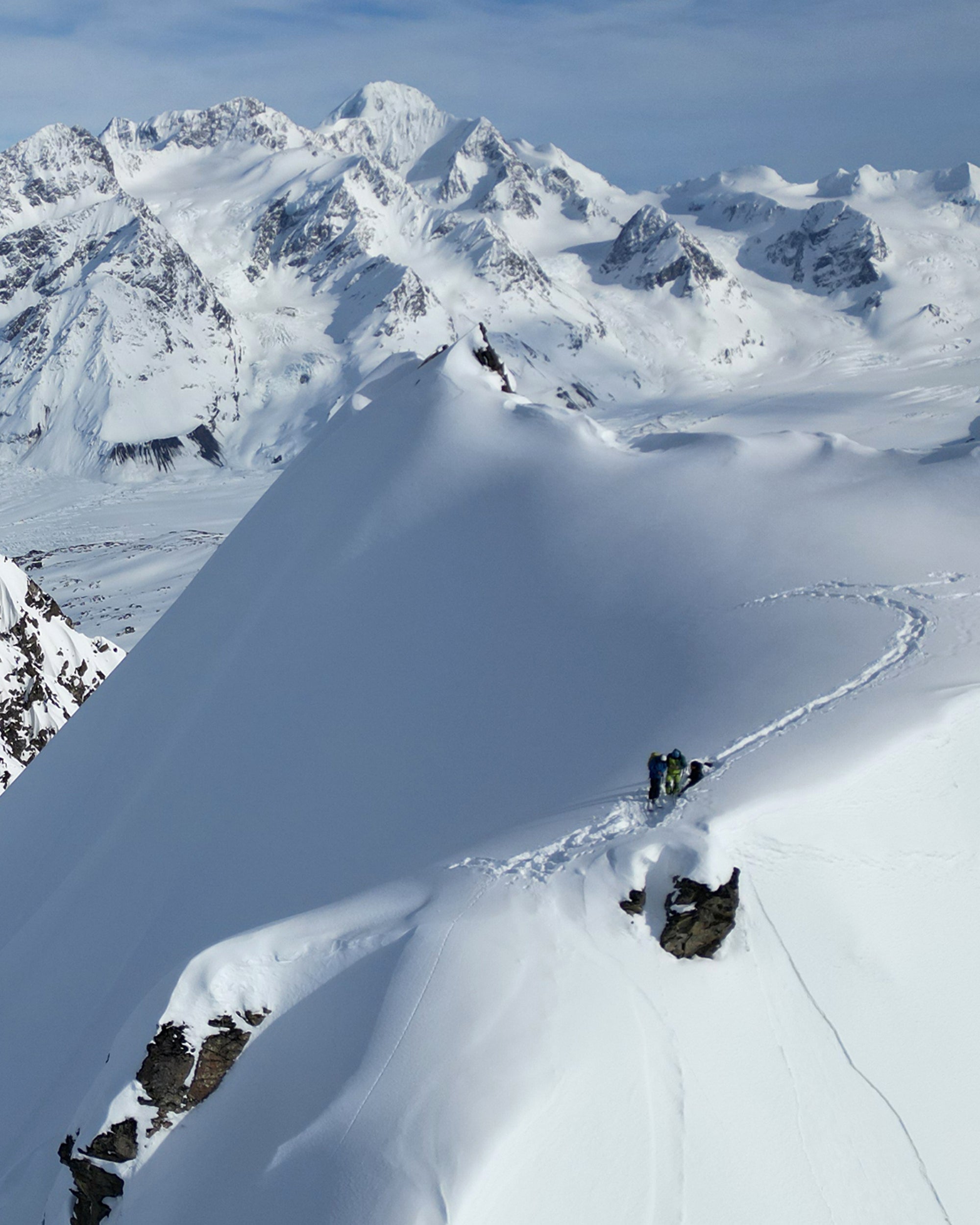
Follow Dorian Densmore and Mya Akins for another winter season of steep Alaskan spines, backyard...
Follow Dorian Densmore and Mya Akins for another winter season of steep Alaskan spines, backyard couloirs, and deep adventures in the mountains.
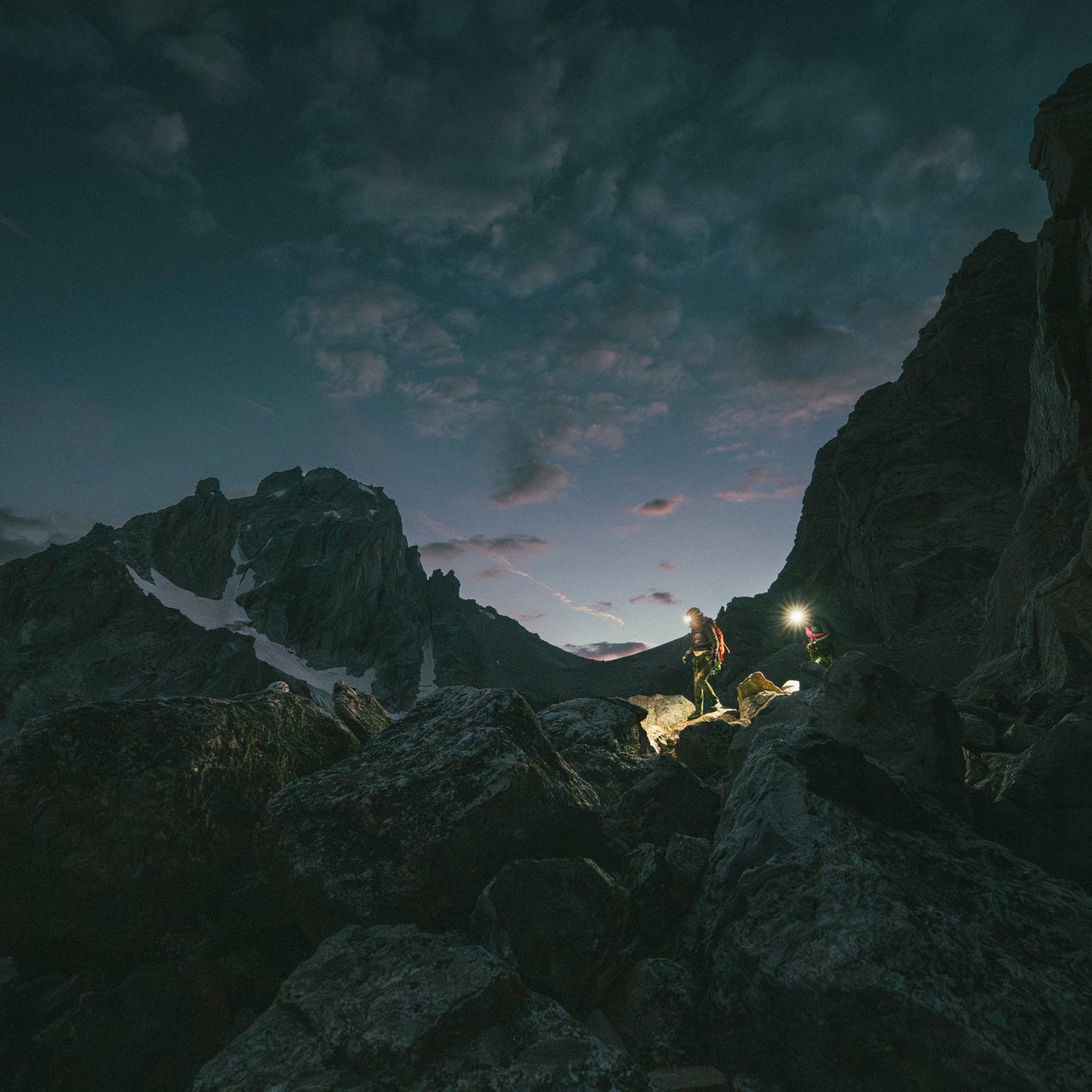
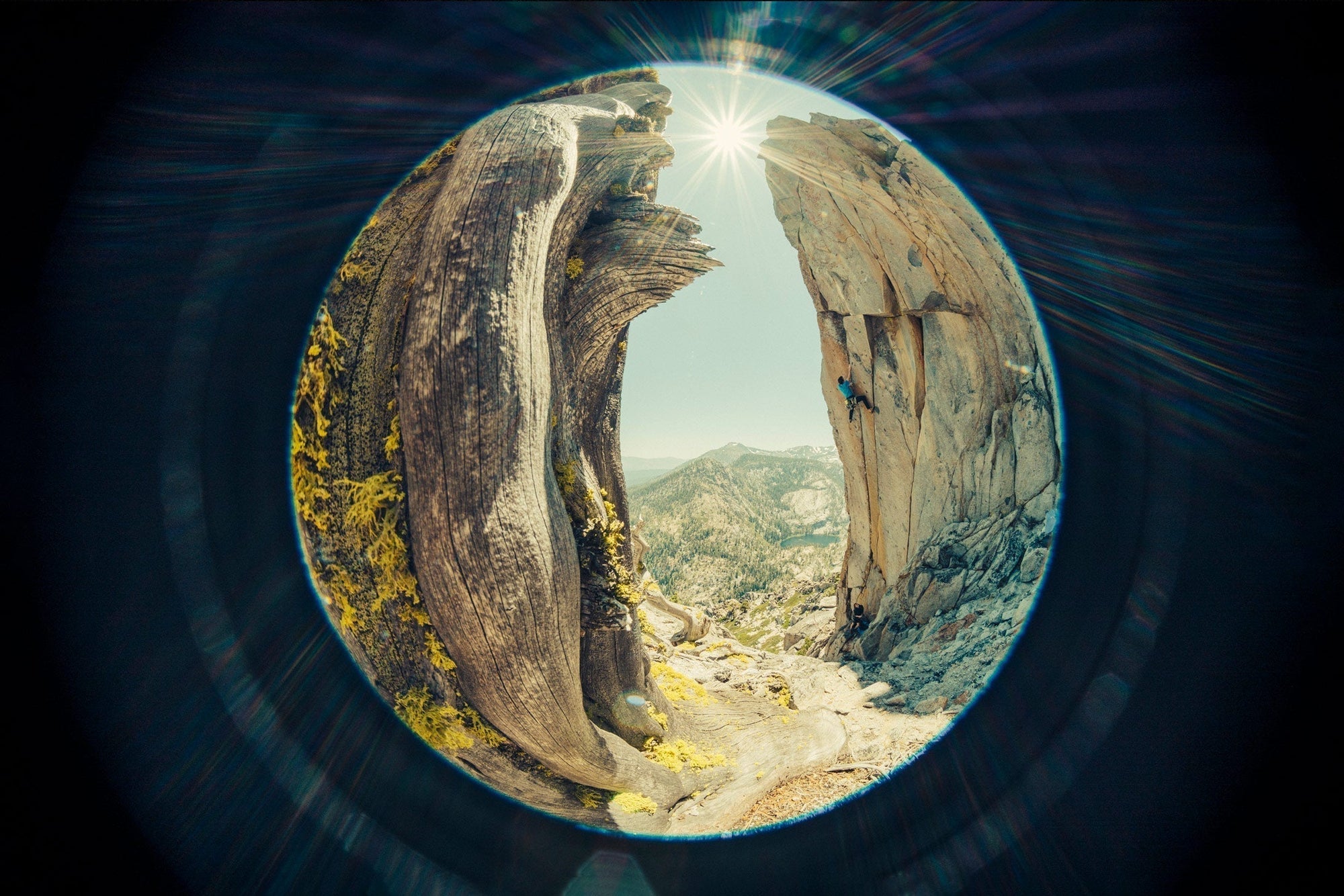
Watch BD Athlete Alex Honnold throw down on some hard trad high above Tahoe.
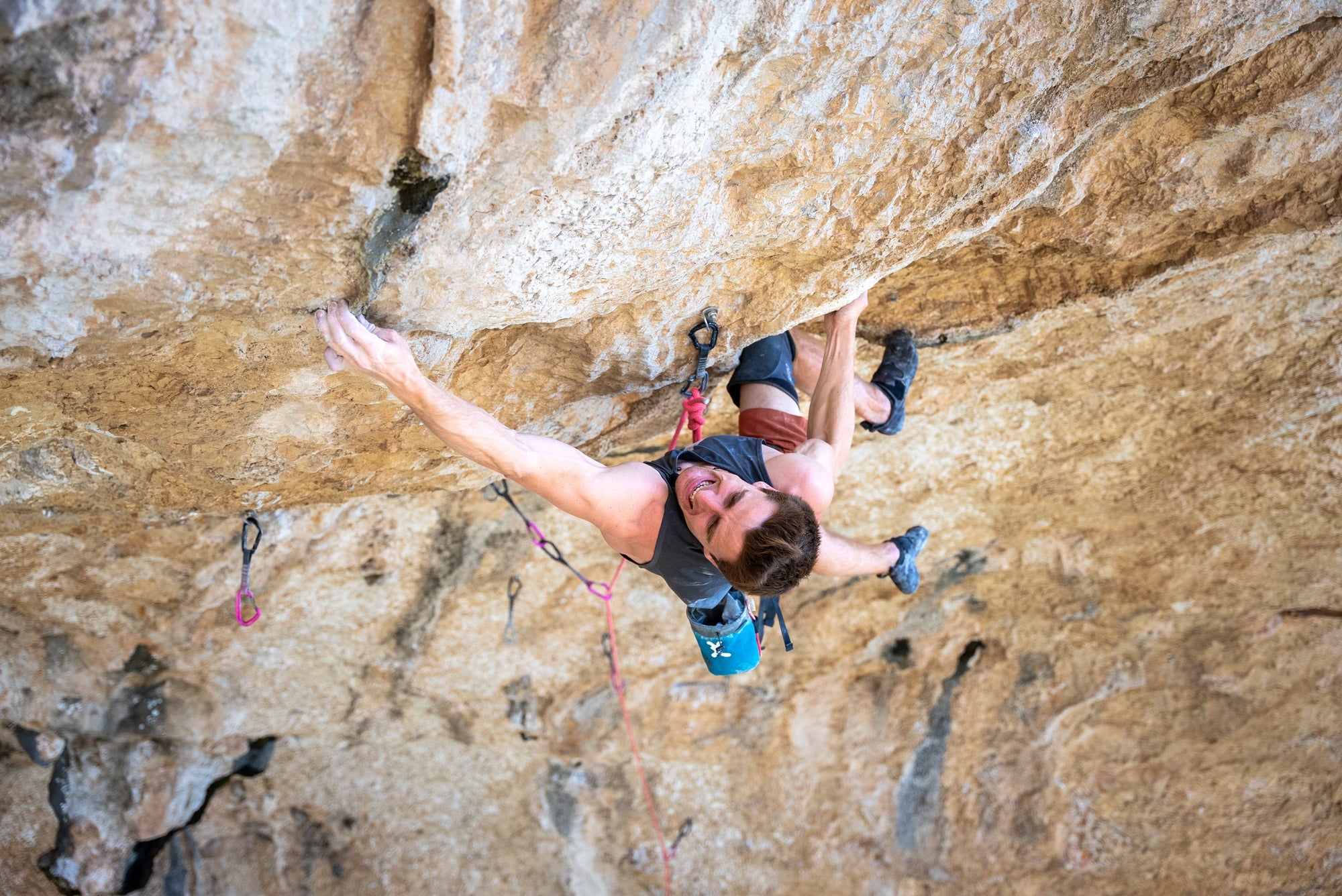
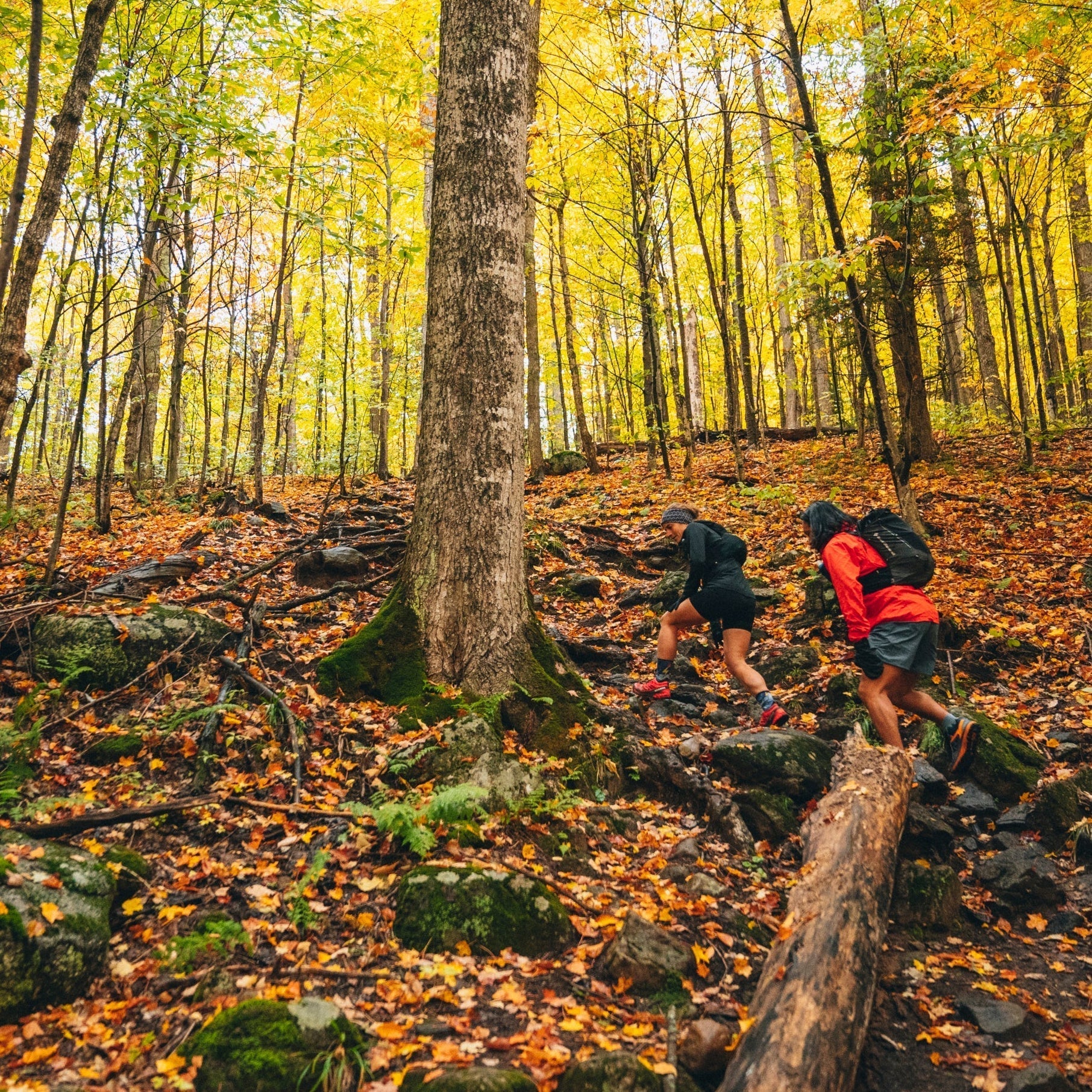
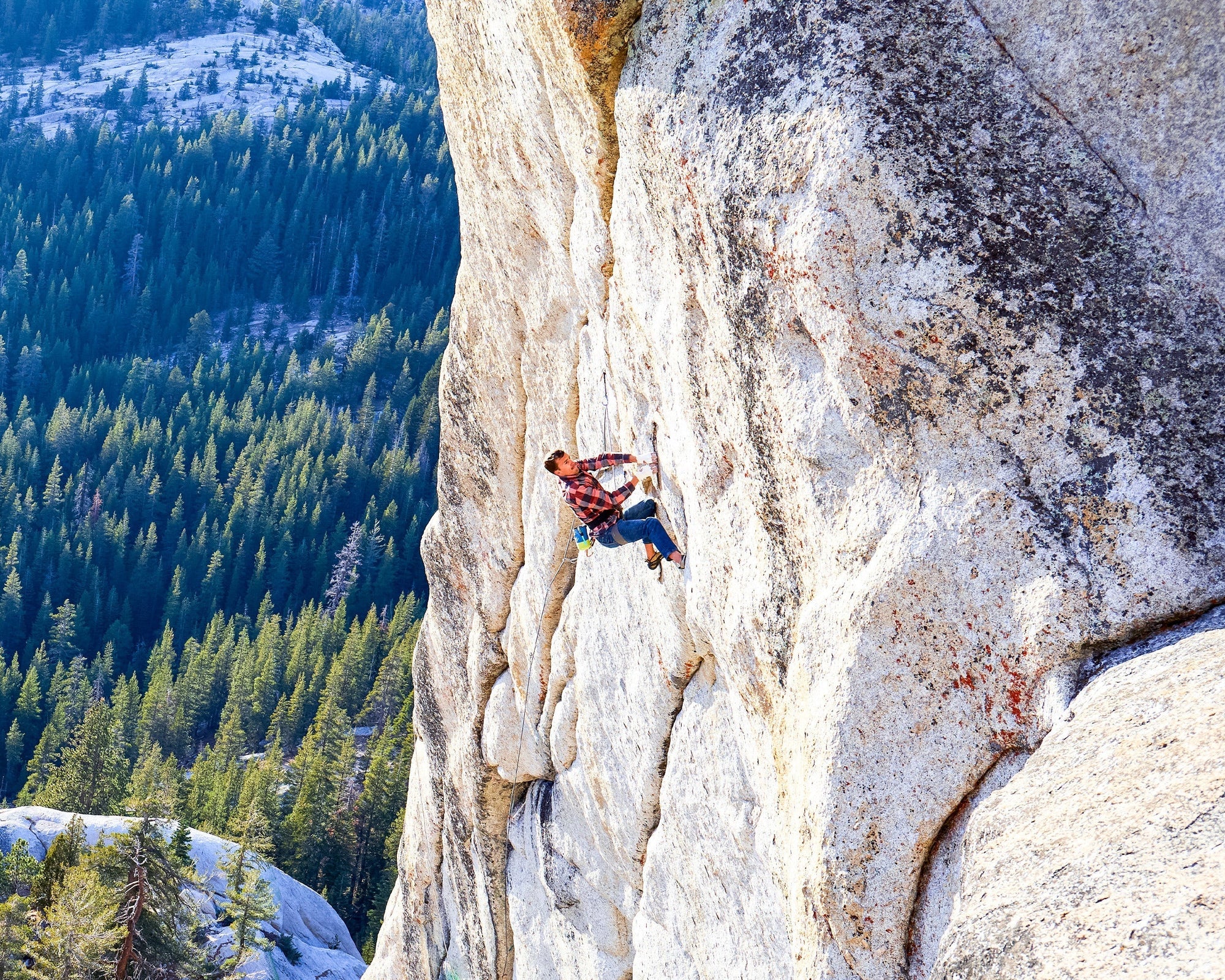
In 2012, filmmaker and photographer Ben Ditto, and professional climber Mason Earle equipped an immaculate...
In 2012, filmmaker and photographer Ben Ditto, and professional climber Mason Earle equipped an immaculate line in Tuolumne’s high country. But their attempts to free the route were thwarted when Mason’s life changed drastically. With the help of Connor Herson, Ditto and Mason found a way to keep the dream alive.
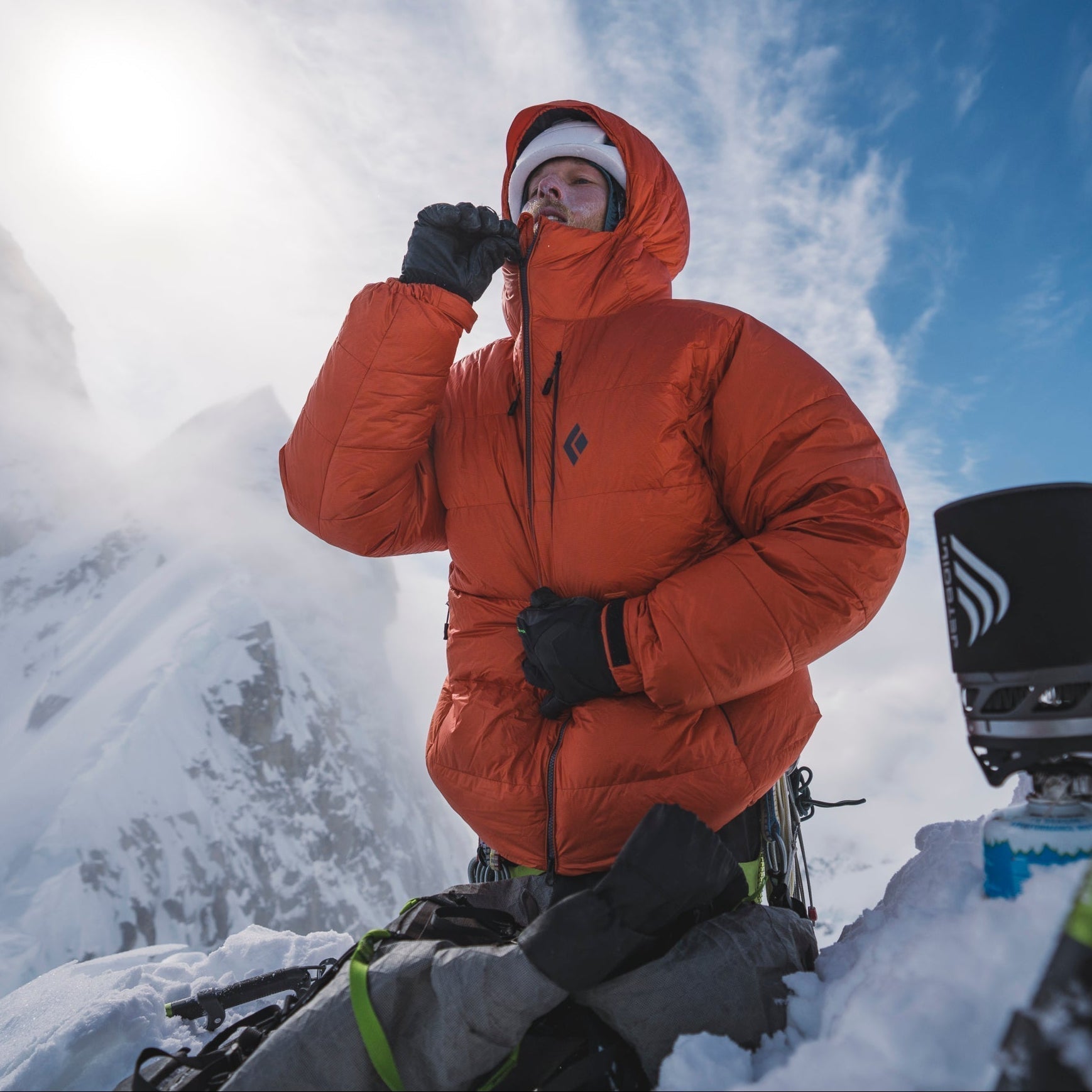

Watch and learn as our Field Test Coordinator runs you through a step by step...
Watch and learn as our Field Test Coordinator runs you through a step by step process of trimming and setting up any STS-style Black Diamond skin.


Every climber has a few lines they dream about. Whether inspired or haunted—or sometimes both—these...
Every climber has a few lines they dream about. Whether inspired or haunted—or sometimes both—these lines can push us beyond what we thought we were capable of, in turn teaching us who we really are. BD Ambassador Ethan Salvo recently restructured his entire life to focus on two climbs that pulled him into the void with only one way out … getting to the top. This is his story of sending Dreamcatcher and becoming the first Canadian to climb V16 in the same week.

BD Athlete Connor Herson spent as many weekends as possible in the Valley this spring...
BD Athlete Connor Herson spent as many weekends as possible in the Valley this spring during a grueling quarter at Stanford. The objective? Ground up, in-a-day ascents.
